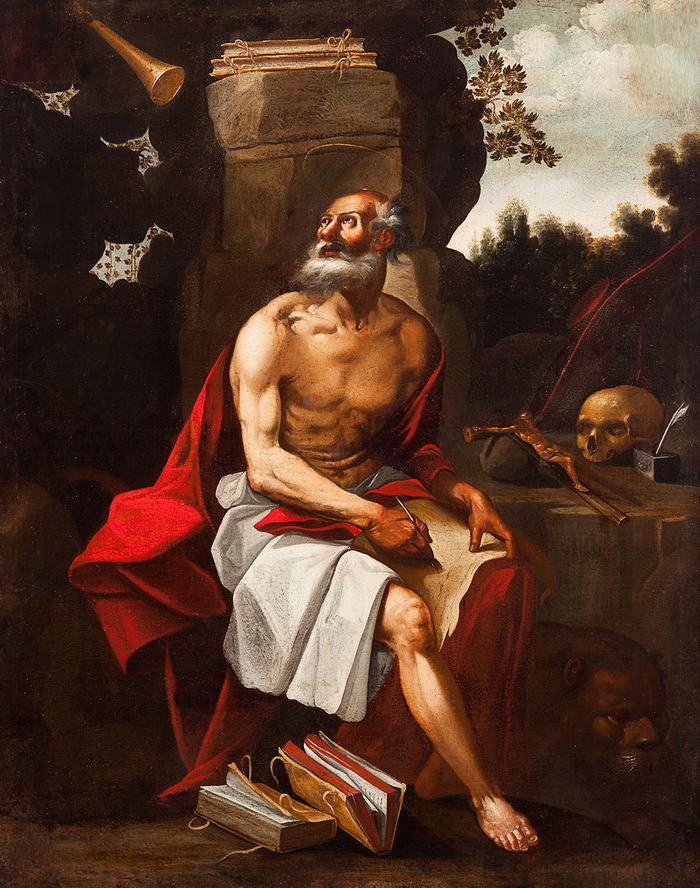The penitent Saint Jerome in the desert

Technical details
Description
Francisco Pacheco, father-in-law to Velázquez, painted The penitent Saint Jerome in the desert, a work corresponding perfectly to the Counter-Mannerist style, adapted to convey in images the religious spirit of the Counter-Reformation. For the composition and iconography of this painting, the painter from Seville made use of the print "Saint Jerome Hearing the Trumpet of the Last Judgement" made by Jusepe Ribera in 1621 in Naples; and for the rocky landscape, he used another print by Ribera from the same year, "The Penitent Saint Peter". Pacheco's style of painting features lengthened figures and a dry and marked style, with clear Flemish influence in the landscape. Alone in the desert, Saint Jerome devotes himself to prayer, fasting and writing the Vulgate version of the Bible.


